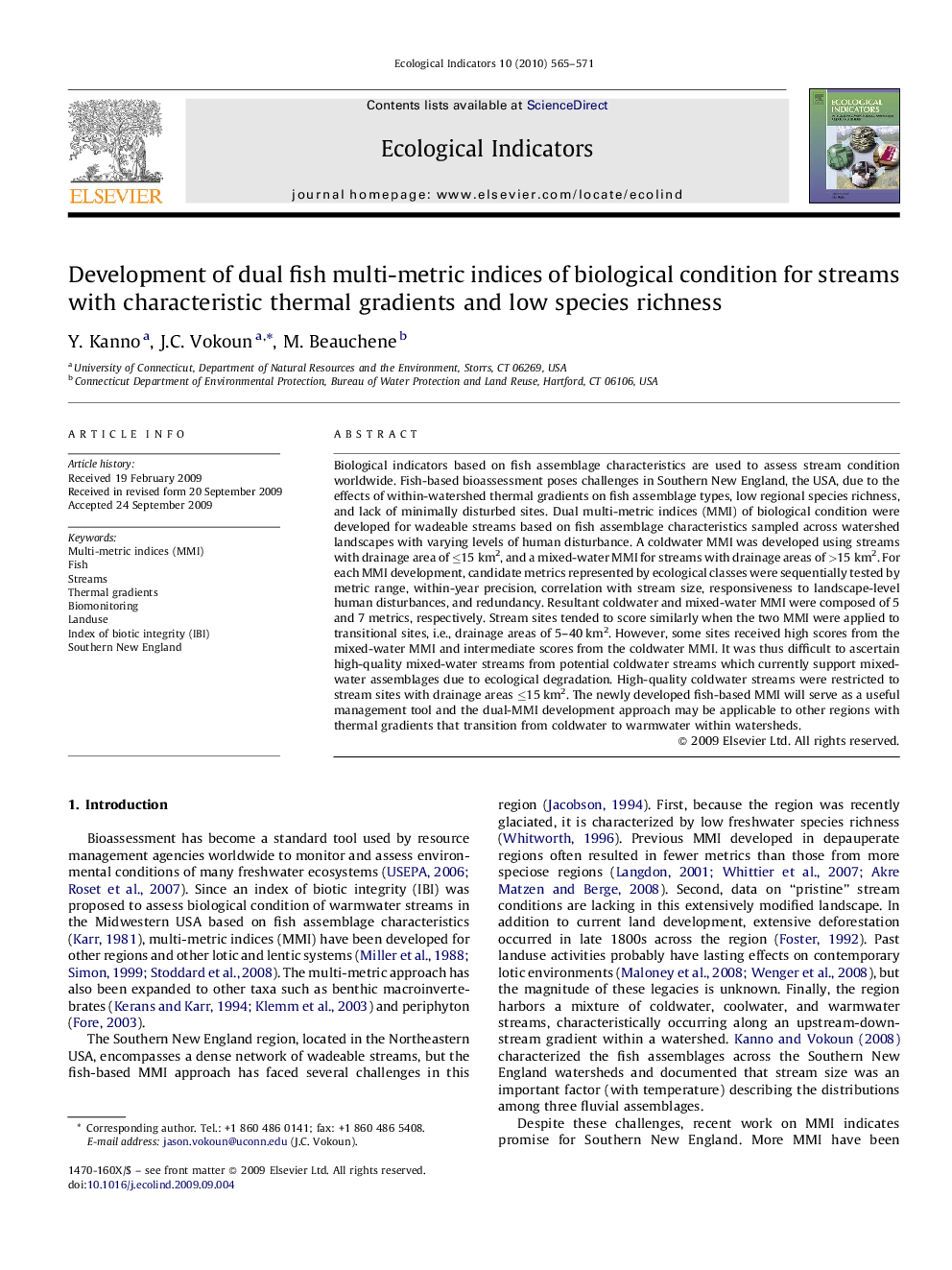| Article ID | Journal | Published Year | Pages | File Type |
|---|---|---|---|---|
| 4374197 | Ecological Indicators | 2010 | 7 Pages |
Abstract
Biological indicators based on fish assemblage characteristics are used to assess stream condition worldwide. Fish-based bioassessment poses challenges in Southern New England, the USA, due to the effects of within-watershed thermal gradients on fish assemblage types, low regional species richness, and lack of minimally disturbed sites. Dual multi-metric indices (MMI) of biological condition were developed for wadeable streams based on fish assemblage characteristics sampled across watershed landscapes with varying levels of human disturbance. A coldwater MMI was developed using streams with drainage area of â¤15 km2, and a mixed-water MMI for streams with drainage areas of >15 km2. For each MMI development, candidate metrics represented by ecological classes were sequentially tested by metric range, within-year precision, correlation with stream size, responsiveness to landscape-level human disturbances, and redundancy. Resultant coldwater and mixed-water MMI were composed of 5 and 7 metrics, respectively. Stream sites tended to score similarly when the two MMI were applied to transitional sites, i.e., drainage areas of 5-40 km2. However, some sites received high scores from the mixed-water MMI and intermediate scores from the coldwater MMI. It was thus difficult to ascertain high-quality mixed-water streams from potential coldwater streams which currently support mixed-water assemblages due to ecological degradation. High-quality coldwater streams were restricted to stream sites with drainage areas â¤15 km2. The newly developed fish-based MMI will serve as a useful management tool and the dual-MMI development approach may be applicable to other regions with thermal gradients that transition from coldwater to warmwater within watersheds.
Keywords
Related Topics
Life Sciences
Agricultural and Biological Sciences
Ecology, Evolution, Behavior and Systematics
Authors
Y. Kanno, J.C. Vokoun, M. Beauchene,
